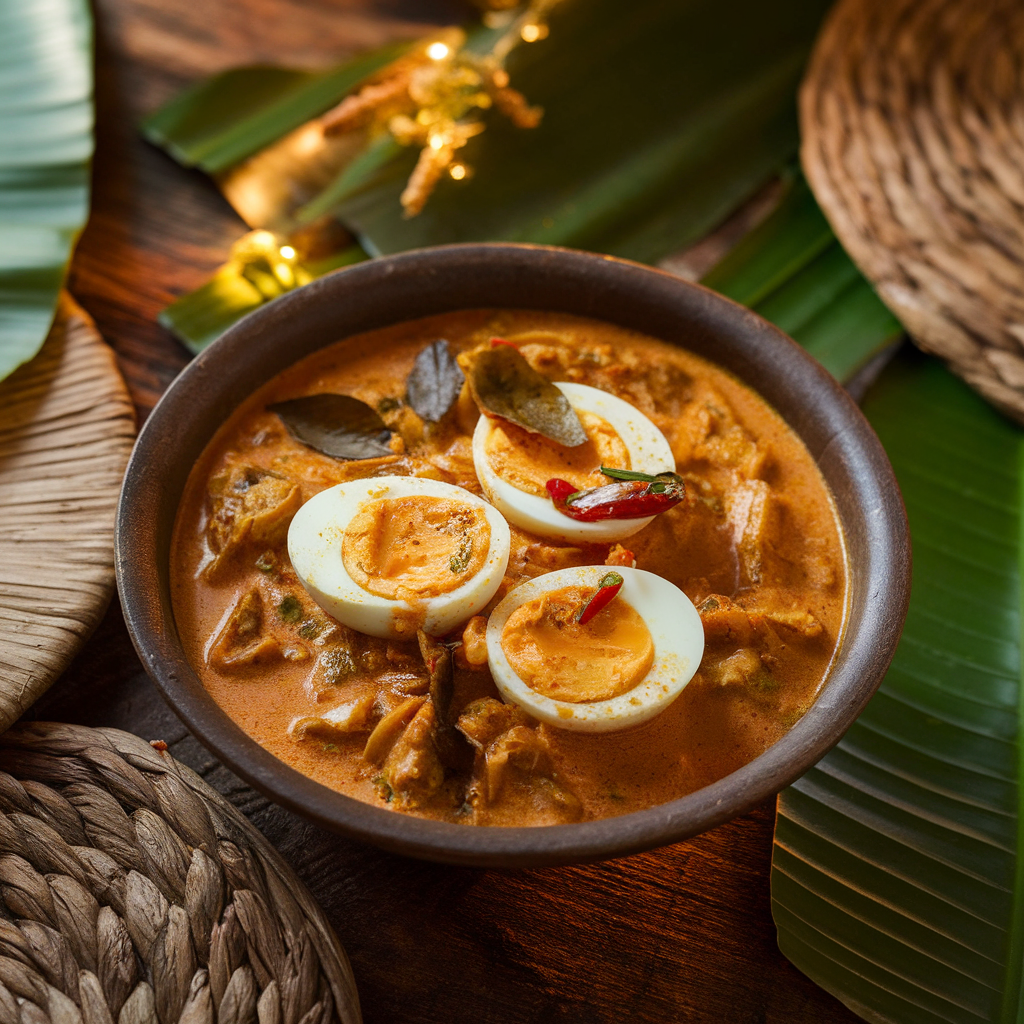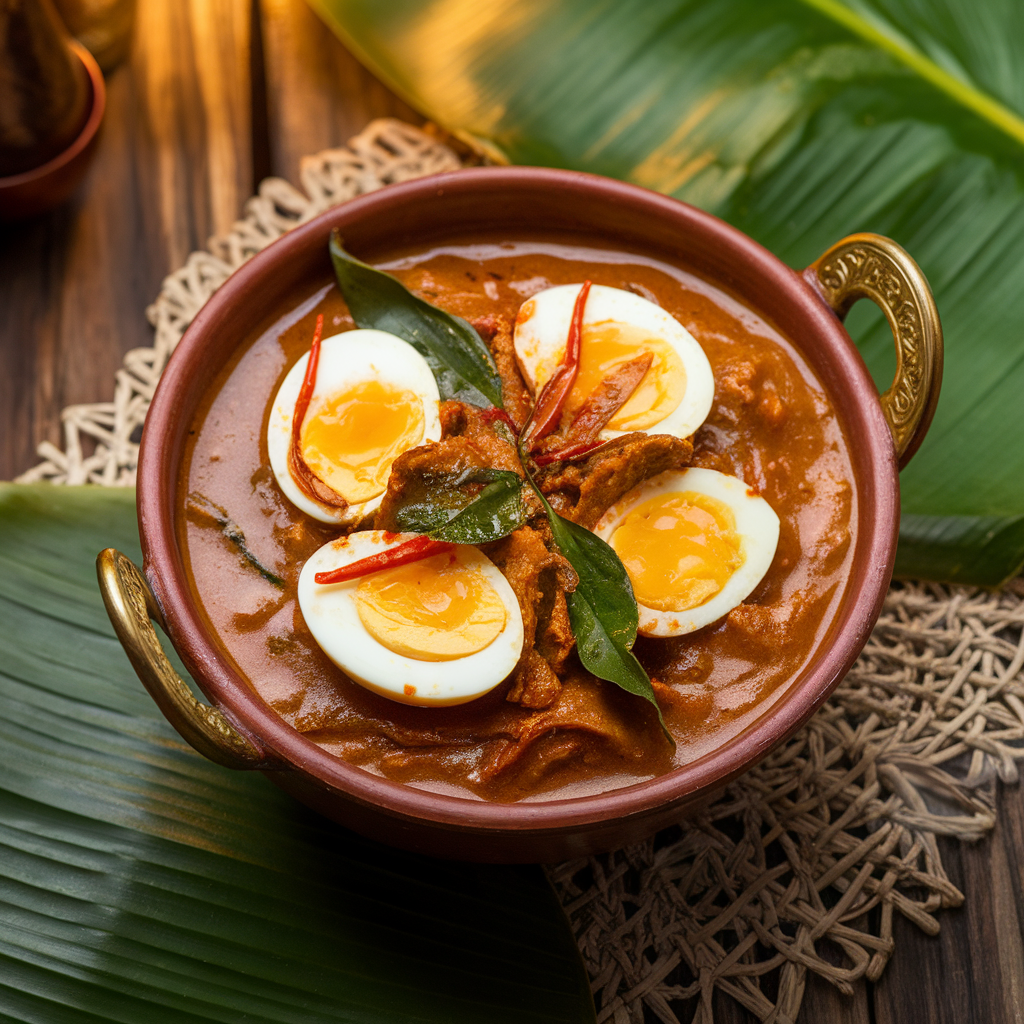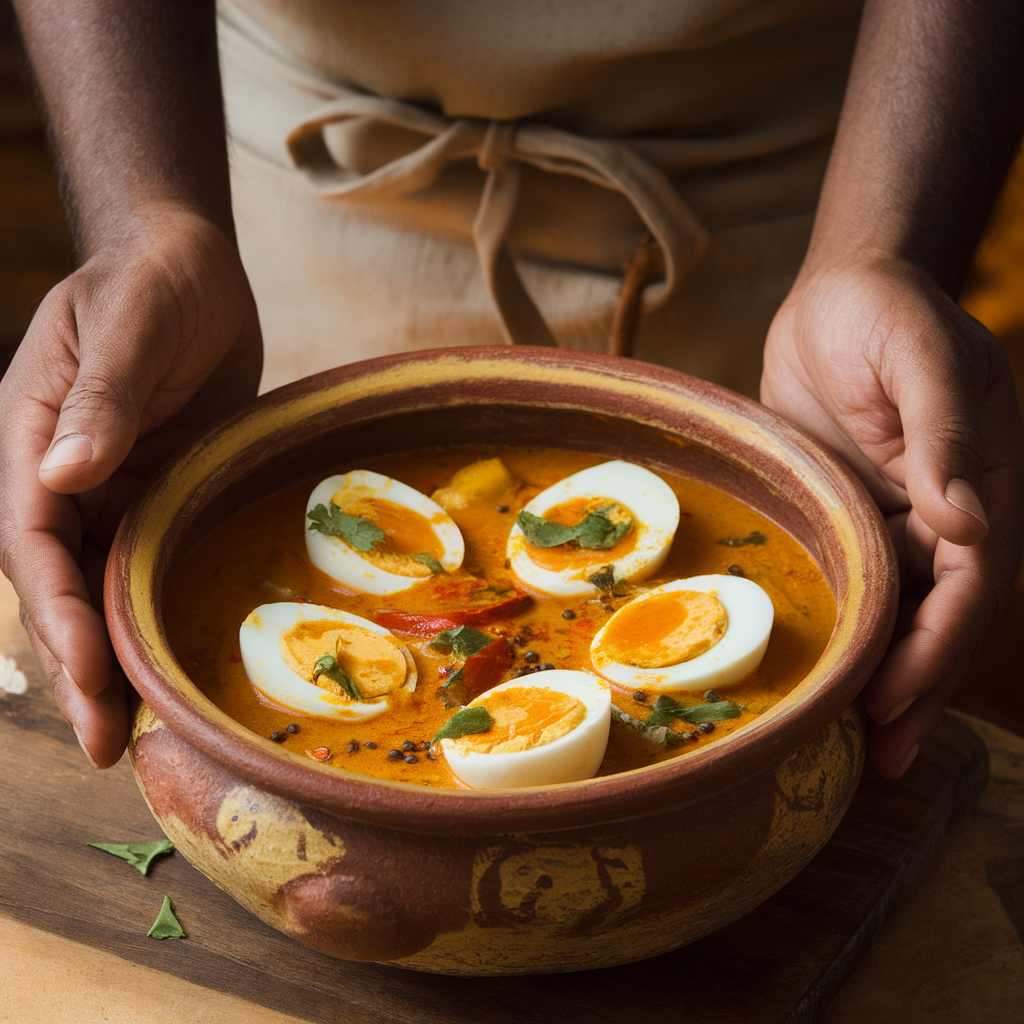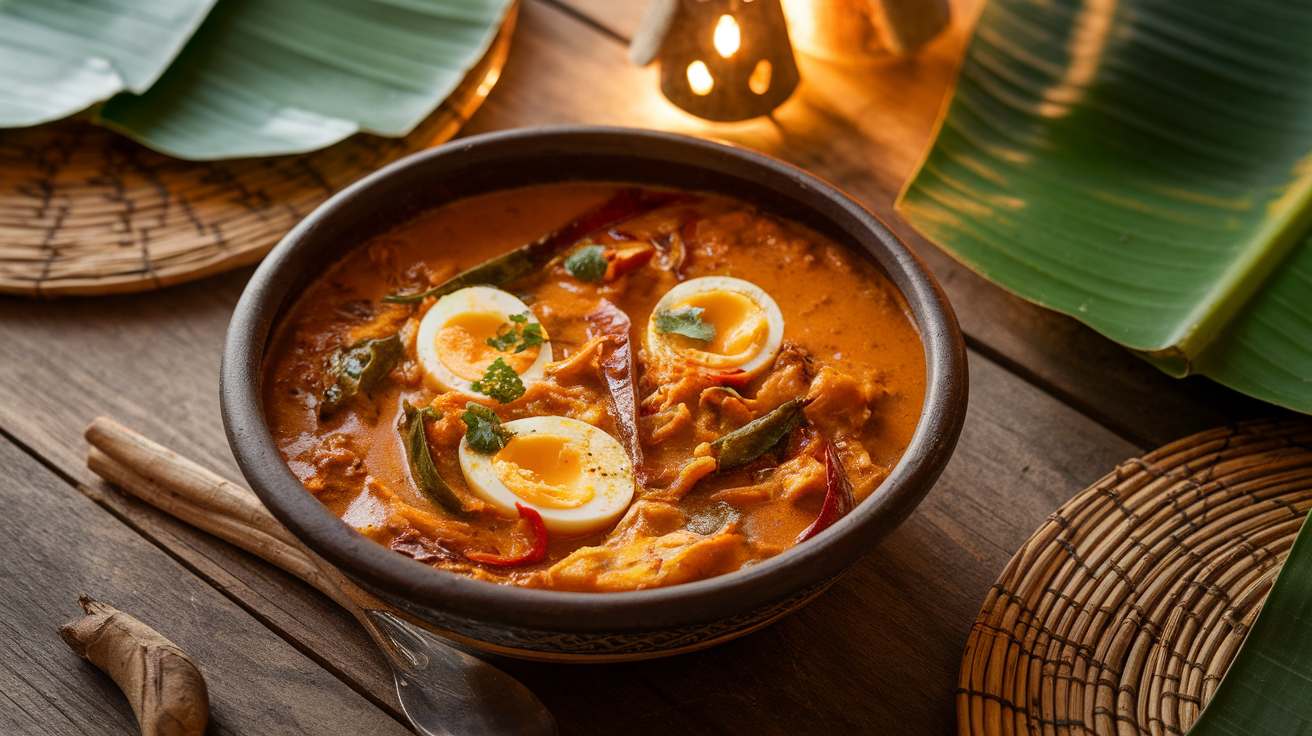For lovers of flavorful yet easy-to-make curries, the Sri Lankan Egg Curry Recipe offers a mouthwatering experience that perfectly showcases the rich heritage of Sri Lankan food alongside influences from Indian cooking. This dish combines boiled eggs with a luscious, spiced coconut gravy, delivering a balance of heat, aroma, and creaminess in every bite.
Whether you are a beginner looking for a curry easy enough to whip up on a busy weeknight, or an experienced home cook seeking to expand your repertoire of curry recipes, this recipe is your gateway to exploring the vibrant culinary traditions of Sri Lanka and India. Plus, with the growing popularity of recipe videos online, it’s easier than ever to master this dish step-by-step by watching a detailed recipe video that guides you through every stage.
A Brief History: The Origins of Sri Lankan Egg Curry and Its Place in Indian Curry Traditions
Understanding the background of this delicious egg curry adds a layer of appreciation when you cook or eat it. Sri Lankan cuisine is an exquisite fusion of South Asian, Southeast Asian, and colonial culinary influences. The island’s proximity to India, especially the Tamil Nadu region, means many ingredients and cooking techniques overlap with Indian cooking.
Egg curry is a beloved dish throughout South Asia because eggs are affordable, nutritious, and versatile. In Sri Lanka, the curry stands out due to the generous use of coconut milk, curry leaves, and distinctive spice blends like Sri Lankan curry powder, which differs from Indian garam masala with its inclusion of roasted fennel and pandan leaves.
This curry reflects the tropical climate and the abundance of coconut trees in Sri Lanka, making coconut milk a staple ingredient that lends richness and balances the strong spices, creating a unique flavor profile distinct from many North Indian curries which tend to use yogurt or cream.
Why Sri Lankan Egg Curry is the Perfect Curry Easy Recipe
Many curry recipes require long preparation times or difficult-to-find ingredients. The Sri Lankan egg curry recipe defies that by being straightforward without compromising flavor.
- Fast to prepare: Hard boiling eggs and sautéing spices takes under 30 minutes.
- Minimal ingredients: Most spices are pantry staples for anyone familiar with Indian cooking.
- No special equipment needed: Just a pan and a stove.
- Highly adaptable: Easily adjusted to suit spice tolerance or dietary preferences.
- Comfort food: Warm, filling, and satisfying.
This makes it a perfect choice for those seeking a curry easy recipe that doesn’t sacrifice authenticity or taste.

Essential Ingredients in Sri Lankan Egg Curry
To truly capture the essence of Sri Lankan food and Indian curry, here are the core ingredients, including tips on sourcing and alternatives:
Los huevos
- Use fresh, free-range eggs if possible. Hard boiled and peeled.
- Prick eggs gently with a fork to allow flavors to infuse.
Oil
- Coconut oil is preferred for authentic flavor and aroma.
- Vegetable or mustard oil can be used if coconut oil is unavailable.
Aromatics
- Onion: finely chopped, caramelized for sweetness.
- Garlic: minced, for pungency.
- Ginger: grated, adds warmth and zest.
- Green chili: sliced, controls the heat level.
Whole Spices
- Mustard seeds: tempering adds nuttiness.
- Cinnamon stick: sweet-spicy undertone.
- Cardamom pods: fragrant warmth.
- Curry leaves: aromatic and quintessential to South Indian and Sri Lankan cooking.
Ground Spices
- Turmeric powder: earthiness and color.
- Sri Lankan curry powder: a unique blend with roasted fennel, coriander, cumin, and pandan leaves.
- Chili powder: adjust per heat preference.
- Garam masala: can substitute if Sri Lankan curry powder is unavailable.
Vegetables & Liquids
- Tomato: adds acidity and body to the gravy.
- Coconut milk: thick and creamy, balances spice.
- Salt: to taste.
Garnish
- Fresh coriander leaves: bright herbal finish.
Step-by-Step Sri Lankan Egg Curry Recipe with Pro Tips
Step 1: Hard Boil and Prepare the Eggs
- Place eggs in boiling water and cook for 10 minutes.
- Transfer to cold water immediately to stop cooking.
- Peel carefully to keep eggs intact.
- Lightly prick eggs with a fork or knife on all sides. This helps the curry flavors seep in during simmering.
Step 2: Tempering the Whole Spices
- Heat 2 tablespoons of coconut oil on medium heat.
- Add 1 teaspoon mustard seeds; wait for them to pop.
- Add 1 cinnamon stick, 2-3 cardamom pods, and a sprig of curry leaves.
- Stir for 30 seconds until aromatic.
Pro Tip: Be careful not to burn spices; reduce heat if necessary.

Step 3: Sauté Aromatics
- Add one large finely chopped onion.
- Sauté until golden brown—this can take 8-10 minutes. Patience is key to developing sweetness.
- Add minced garlic (3 cloves), grated ginger (1-inch piece), and sliced green chili (2 pieces).
- Cook for 2-3 minutes until fragrant.
Step 4: Add Ground Spices and Tomatoes
- Sprinkle 1 teaspoon turmeric powder, 1 tablespoon Sri Lankan curry powder, and 1 teaspoon chili powder.
- Stir constantly for 1-2 minutes to release the spices’ essential oils.
- Add 1 large chopped tomato and cook down for 5-7 minutes until soft and pulpy.
Pro Tip: If you prefer a smoother gravy, mash the tomatoes as they cook.
Step 5: Add Coconut Milk and Salt
- Slowly pour in 1 cup of thick coconut milk, stirring gently.
- Add salt to taste (about 1 teaspoon).
- Bring the curry to a gentle simmer. Avoid boiling vigorously to prevent the coconut milk from curdling.
Step 6: Add Eggs and Simmer
- Add the pricked hard-boiled eggs to the curry.
- Simmer for 8-10 minutes, turning eggs occasionally to coat evenly.
- The gravy should thicken slightly and coat the eggs.
Paso 7: para Decorar y Servir
- Remove from heat.
- Sprinkle with chopped fresh coriander leaves.
- Serve hot with steamed rice or Indian flatbreads like roti or chapati.
How to Serve Your Sri Lankan Egg Curry
The perfect accompaniments enhance the enjoyment of your curry:
- Steamed White or Basmati Rice: The most common pairing that absorbs the flavorful gravy.
- Roti/Chapati: Indian flatbreads offer a delicious alternative to rice.
- Pol Sambol: A traditional Sri Lankan coconut relish that adds texture and spice.
- Vegetable Side Dishes: Stir-fried greens or cucumber salad add freshness.
- Papadams: Crunchy lentil wafers bring contrast in texture.
Nutritional Benefits of Sri Lankan Egg Curry
- Protein-rich: Eggs provide essential amino acids, supporting muscle health and repair.
- Healthy fats: Coconut milk offers medium-chain triglycerides (MCTs) beneficial for energy.
- Spices: Turmeric has anti-inflammatory properties; ginger aids digestion.
- Balanced meal: When served with rice and vegetables, it becomes a nutritionally complete dish.
Variations of Egg Curry Recipe in Sri Lanka and India
Across the region, egg curries take many forms, showing how flexible this dish is:
- Dry Egg Curry: Eggs cooked in a thick masala paste with little gravy.
- North Indian Egg Curry: Often tomato and onion-based, without coconut milk, and uses cream or yogurt.
- Kerala Egg Curry (India): Similar to Sri Lankan with coconut milk, but uses a slightly different spice blend.
- Egg Curry with Potatoes: Adding boiled potatoes makes it more filling and hearty.
- Spicy Egg Curry: Adding more green chilies or black pepper for heat lovers.

Why Follow Recipe Videos for Indian Cooking?
El aprendizaje Indian cooking or Sri Lankan dishes from a recipe video can be extremely helpful:
- Visual demonstration: Helps with chopping techniques and spice roasting.
- Timing: Understand how long to cook each ingredient.
- Texture cues: Know how the onion should look or when the oil separates.
- Confidence: Seeing the steps boosts confidence in trying new recipes.
- Accessibility: Pause and replay at your own pace.
Many YouTube channels and food bloggers specialize in South Asian cooking, providing detailed recipe videos for dishes like this egg curry recipe.
Troubleshooting Common Mistakes
- Curdled Coconut Milk: Avoid boiling vigorously; simmer gently.
- Bland Curry: Ensure spices are fresh and sautéed properly.
- Eggs falling apart: Peel carefully and avoid breaking eggs while stirring.
- Too Spicy: Adjust chili powder and green chilies to your tolerance.
- Thin Gravy: Simmer longer to reduce or add a small slurry of chickpea flour to thicken.
The Cultural Significance of Egg Curry in Sri Lanka and India
Egg curry is more than just food; it’s comfort, tradition, and community:
- In Sri Lanka, it is commonly served as a quick meal or festive dish during gatherings.
- In Indian households, egg curry is a popular dish for breakfast, lunch, or dinner.
- Eggs symbolize nourishment and vitality in many cultures.
- The use of spices in curry reflects centuries of cultural exchange, trade, and innovation.
Step-by-Step Printable Sri Lankan Egg Curry Recipe
| Ingredients | Quantity |
|---|---|
| Los huevos | 6 hard boiled |
| Coconut oil | 2 tbsp |
| Cebolla | 1 large, finely chopped |
| El ajo | 3 cloves, minced |
| Jengibre | 1 inch, grated |
| Green chili | 2, sliced |
| Mustard seeds | 1 tsp |
| Cinnamon stick | 1 |
| Cardamom pods | 2-3 |
| Curry leaves | 1 sprig |
| Turmeric powder | 1 tsp |
| Sri Lankan curry powder | 1 tbsp |
| Chili powder | 1 tsp (adjust to taste) |
| Tomato | 1 large, chopped |
| Coconut milk | 1 cup thick |
| Sal | To taste |
| Fresh coriander leaves | For garnish |
Instructions
- Boil and peel eggs. Prick lightly.
- Heat oil, add mustard seeds until they pop.
- Add cinnamon, cardamom, and curry leaves.
- Sauté onions until golden.
- Add garlic, ginger, and chilies; cook 2 min.
- Add turmeric, curry powder, chili powder; stir 1-2 min.
- Add tomato; cook until soft.
- Pour coconut milk and salt; simmer gently.
- Add eggs; simmer 10 min.
- Garnish with coriander and serve hot.
Reflexiones Finales
El Sri Lankan Egg Curry Recipe is a gateway to exploring the luscious world of Sri Lankan food y Indian cooking. Its blend of spices, creamy coconut milk, and simple preparation makes it a quintessential curry easy dish for everyday cooking or special occasions.
Whether you prefer following written instructions or watching a recipe video, this curry’s charm lies in its balance of flavor, texture, and cultural depth. It’s a celebration of heritage served on a plate—warm, comforting, and absolutely delicious.
So, gather your ingredients, fire up your stove, and embark on this culinary journey. Your taste buds—and your family—will thank you!


